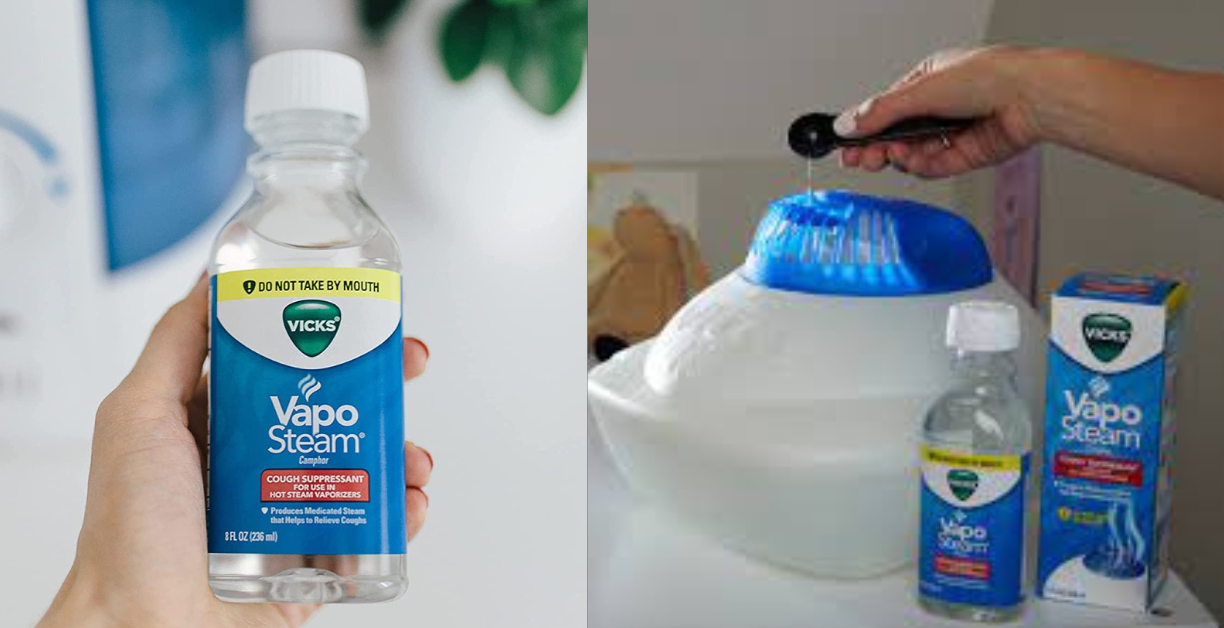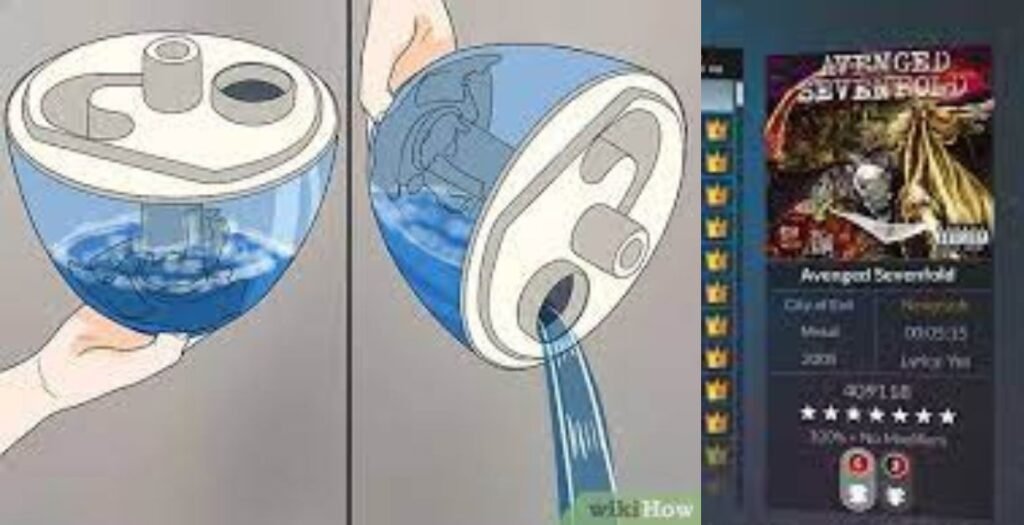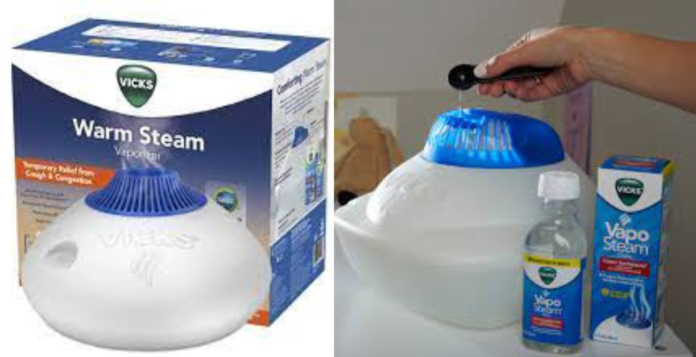You may look for how to clean vicks humidifier then this article is best for you.
To keep your humidifier running efficiently, clean it regularly. Cleaning should be done once a week. We suggest following the distinct procedures of disinfecting and removing scale from your humidifier, which are listed below.
These two procedures need to be carried out independently. It won’t take long to descale and sanitise your humidifier!
Approximately 10 to 15 minutes for cleaning
how to clean vicks humidifier
Materials required:
a gentle, spotless cloth
Distilled white vinegar
Using bleach and running water
gloves for protection
Soft toothbrush (for Vicks Warm Mist Humidifier only)
All maintenance should be done in the kitchen or bathroom on a water resistant
Toothpick (for Vicks Vaporizer only)
Liquid dish soap (for Vicks Vaporizer only)
surface close to a tap.
Guidelines for how to clean vicks humidifier:
Consult your specific unit’s owner’s manual for routine cleaning and maintenance instructions. Owner’s manuals are available online on the model-specific product website.
•Verify that the device is turned off and disconnected.
•Take out the detachable tray, cooling chamber, and water tank.
•To ensure that the heating element is submerged, fill the base with undiluted white vinegar.
•Avoid immersing the entire base in any liquid.
•Never turn on the heating element when cleaning; instead, let it soak in the vinegar for at least 20 minutes.
•You can immerse the heating element for a longer period of time, like several hours or overnight, if there is a lot of mineral accumulation on it.
•Scrub any minerals off the heating element with a soft-bristled brush while it’s still soaking in the vinegar.
•Scrape and give everything a good water rinse.

Read more
how to clean boar bristle brush
how to remove paint from stone pavers
how much is an old copper boiler worth
Guidelines for Using Cool Mist Humidifiers to Remove Scale:
Consult your specific unit’s owner’s manual for routine cleaning and maintenance instructions. Owner’s manuals are available online on the model-specific product website.
Frequent cleaning of the nebulizer is recommended for ultrasonic humidifiers to ensure optimal performance. The unit’s nebulizer, a circular disc located in the base, produces mist by vibrating at ultrasonic speeds. Minerals from your water may build up on the nebulizer over time, slowing it down to a point where it can no longer produce mist. For now, we advise following these procedures to clean your nebulizer:
•Please ensure that the device is disconnected and switched off.
•Take out and drain the water from the tank, and then pour the unit’s base into your washbasin.
•Just enough undiluted white vinegar to cover the nebulizer should be added to the base. Let it soak for at least 20 minutes. You might want to give it more time to soak if you notice a significant mineral buildup.
•Use a cotton swab to clean the nebulizer’s surrounding area while it’s soaking in vinegar to get rid of any mineral buildup.
•After emptying the vinegar, give the base a water rinse.
•Please don’t operate the device while the vinegar is inside.
To ensure the how to clean vicks humidifier at its best and stays clean, always refer to the user handbook for detailed cleaning instructions and perform routine maintenance. To preserve a healthy environment and maintain optimal performance, it’s imperative to clean your Vicks humidifier on a regular basis.
After disassembling the appliance, wash the base and tank with a mild soap solution and a gentle brush to remove any remaining residue. For more severe build-up, think about soaking in a water-vinegar solution. After giving every component a good cleaning, let it air dry before putting it back together. By taking these precautions, you will lessen the chance that mould and germs will form and your humidifier will continue to give you and your family clean, comfortable air.
how to clean vicks humidifier
How to effectively clean your Vicks Humidifier and tips for maintenance. What parts you need to focus on most during the cleaning process.
## How to Clean Your Vicks Humidifier
Regular cleaning is important to prevent mold and bacteria growth in your humidifier. Here’s how to do it:
### 1. *Unplug and Disassemble:*
* Turn off the humidifier and unplug it.
* Remove the water tank and any other removable parts.
### 2. *Empty and Rinse:*
* Remove any remaining water from the tank and base.
* Rinse both the tank and base with warm water.
### 3. *Descaling:*
* *Vinegar solution:* Fill the tank with equal parts white vinegar and water. Let it sit for 30 minutes to remove mineral buildup.
* *Commercial descaler:* Use a commercial descaler according to the instructions.
### 4. *Disinfecting:*
* *Bleach solution:* Mix 1 teaspoon of bleach with 1 gallon of warm water. Pour this solution into the tank and let it sit for 20 minutes.
* *Hydrogen peroxide:* Use a hydrogen peroxide solution instead of bleach if preferred.
### 5. *Rinse Thoroughly:*
* After soaking, rinse the tank and base thoroughly with clean water to remove any vinegar or bleach residue.
### 6. *Dry Completely:*
* Allow all parts to dry completely before reassembling.
### 7. *Clean Filters (if applicable):*
* If your humidifier has filters, follow the manufacturer’s instructions for cleaning or replacing them.
### 8. *Reassemble:*
* Place the cleaned parts back together and plug in the humidifier.
*Tips:*
* *Regular cleaning:* Clean your humidifier weekly to prevent mold and bacteria growth.
* *Use distilled water:* Using distilled water can help reduce mineral buildup.
* *Avoid overfilling:* Don’t overfill the water tank, as this can lead to mold growth.
* *Check the manual:* Refer to your humidifier’s manual for specific cleaning instructions.
By following these detailed steps and maintaining a regular cleaning schedule, you can ensure that your Vicks humidifier operates efficiently and contributes to a healthier indoor environment. Regular cleaning not only extends the life of the humidifier but also improves the quality of the air you breathe.

What happens if you don’t clean Vicks humidifier?
If you don’t clean your Vicks humidifier regularly, several negative consequences can arise that impact both the device’s performance and your health. Here are some potential issues:
### Bacteria and Mold Growth
– Breeding Ground: Stagnant water left in the humidifier can become a breeding ground for bacteria, mold, and other microorganisms.
– Health Risks: When the humidifier is used, these harmful microorganisms can be released into the air, potentially leading to respiratory issues, allergic reactions, and infections, especially in sensitive individuals like children, the elderly, or those with pre-existing health conditions.
### Mineral Buildup
– Scale Formation: If you use tap water, minerals (like calcium and magnesium) can accumulate inside the tank and other components, forming scale. This buildup can hinder the humidifier’s efficiency and lifespan.
– Reduced Performance: The scale can block water flow or clog the misting mechanism, leading to reduced mist output and requiring more frequent refills.
### Unpleasant Odors
– Stale Water Smell: Over time, stagnant water can develop a foul odor. When the humidifier operates, this smell can spread throughout the room, creating an unpleasant indoor environment.
– Chemical Smell: If you use additives like essential oils or medicated solutions, not cleaning the humidifier can cause these substances to break down and emit unpleasant or harmful odors.
### Inefficiency and Increased Energy Use
– Reduced Efficiency: A dirty humidifier may struggle to maintain the desired humidity level, leading to longer operating times and increased energy consumption.
– Higher Utility Bills: As the unit works harder to produce moisture, your energy bills could increase.
### Shortened Lifespan of the Humidifier
– Wear and Tear: Lack of cleaning can lead to premature wear on parts, such as the fan, motor, or misting components.
– Frequent Repairs or Replacement: Eventually, this could result in more frequent repairs or the need for a complete replacement of the humidifier, costing more in the long run.
### Poor Indoor Air Quality
– Dust and Allergens: Dust and allergens can accumulate in the humidifier, which can be released into the air, exacerbating allergies or asthma.
– Humidity Imbalance: Inconsistent humidity levels caused by a dirty humidifier can lead to discomfort and potential damage to your home (like mold growth or wood warping).
To avoid these issues, it’s crucial to establish a regular cleaning routine for your Vicks humidifier. By keeping it clean, you can ensure it operates effectively, maintains good air quality, and supports your health and comfort.
Is it safe to leave Vicks humidifier on all night?
Leaving a Vicks humidifier on all night can be beneficial, particularly in maintaining comfort and improving air quality. However, it’s essential to consider safety measures and best practices to maximize the benefits while minimizing potential risks. Here’s an in-depth look at the factors involved:
### 1. Safety Features of Vicks Humidifiers
– *Automatic Shut-Off:*
– Most Vicks humidifiers are equipped with an automatic shut-off feature that activates when the water level drops too low. This prevents the unit from running dry, which could lead to overheating and potential damage.
– Always check the manufacturer’s specifications to ensure your model has this feature, as it is crucial for safe overnight operation.
### 2. Proper Placement
– *Flat, Stable Surface:*
– Place the humidifier on a flat and stable surface to avoid spills and ensure even distribution of moisture. An unstable position can lead to tipping, resulting in water damage to surfaces or electrical components.
– *Distance from Walls and Electronics:*
– Keep the humidifier at least a few feet away from walls, furniture, and electronic devices. This allows for proper airflow and helps prevent moisture damage or electrical hazards.
– *Avoid Direct Exposure:*
– Position the humidifier away from direct airflow from fans or vents, as this can cause uneven humidity distribution and reduce its effectiveness.
### 3. Water Quality
– *Use Distilled or Purified Water:*
– Using distilled or purified water reduces mineral buildup in the humidifier and the release of minerals into the air. Tap water can contain impurities and minerals that may create white dust or increase bacteria growth.
– *Regular Refilling:*
– If you choose to run the humidifier overnight, ensure you start with a full tank to maximize its operation time. You may also want to check it during the night if it has a smaller capacity.
### 4. Cleaning Routine
– *Regular Maintenance:*
– Clean your humidifier at least once a week to prevent the growth of mold and bacteria. Build-up in the tank or other components can lead to the release of harmful particles into the air.
– *Cleaning Steps:*
– Refer to the cleaning instructions specific to your model. Generally, this includes emptying the tank, using a vinegar solution to scrub the tank and base, rinsing thoroughly, and letting it dry completely.
– *Monitor for Changes:*
– If you notice any unusual smells, discoloration, or buildup, increase the frequency of cleaning.
### 5. Monitoring Humidity Levels
– *Ideal Humidity Range:*
– The optimal indoor humidity level is between 30-50%. Excessive humidity can lead to mold growth and discomfort, while too little humidity can dry out your skin and airways.
– *Using a Hygrometer:*
– Invest in a hygrometer to measure the humidity levels in your home. This can help you determine when to use the humidifier and for how long.
– *Adjusting Usage:*
– If humidity levels exceed 50%, consider turning off the humidifier or using it intermittently to avoid excessive moisture.
### 6. Benefits of Overnight Use
– *Improved Sleep Quality:*
– Many people find that a humidifier helps relieve symptoms of congestion, cough, and dry throat, leading to more comfortable sleep.
– Maintaining adequate humidity can also prevent irritation in the nasal passages and throat, which can disrupt sleep.
– *Enhanced Comfort:*
– Running a humidifier in dry conditions (especially in winter or in dry climates) can alleviate dryness in the skin and eyes, making the environment feel more comfortable.
Leaving a Vicks humidifier on all night is generally safe and can provide several health benefits, including improved air quality and better sleep. By following safety precautions, ensuring proper maintenance, and monitoring humidity levels, you can maximize the positive effects of using a humidifier while minimizing any potential risks. This approach will help create a healthier and more comfortable living environment, contributing to your overall well-being.
Is it bad to run a humidifier without water?
Yes, running a humidifier without water can be harmful for several reasons:
### 1. *Risk of Overheating*
– *Heating Elements:* Many humidifiers, especially warm mist models, use heating elements to boil water. If there’s no water present, the heating element can overheat, potentially damaging the unit or causing a fire hazard.
– *Automatic Shut-Off:* Some humidifiers have an automatic shut-off feature that kicks in when the water level is low, preventing overheating. However, if this feature fails or is absent, the unit can be damaged.
### 2. *Damage to Components*
– *Pump and Motor Wear:* Running the humidifier without water can strain the pump and motor, leading to premature wear and eventual failure. This can result in costly repairs or the need for a replacement.
– *Drying Out:* Humidifiers are designed to operate with water. Operating them dry can cause seals, gaskets, and other components to dry out and crack.
### 3. *Air Quality Issues*
– *Dust and Particles:* Some humidifiers, especially those that rely on ultrasonic technology, may emit dust and other particles when run without water. This can degrade indoor air quality and could be harmful when inhaled.
– *Increased Temperature:* Without water to evaporate, the humidifier may run hotter than intended, which could create discomfort in the room and possibly lead to overheating of nearby surfaces.
### 4. *Potential for Mold and Bacteria Growth*
– *Internal Residue:* If a humidifier is frequently run without water, any leftover moisture or cleaning solutions can become stagnant inside the unit, leading to the growth of mold and bacteria. This can create health risks when the humidifier is eventually used again.
To avoid these issues, always ensure that your humidifier has enough water before operating it. If you notice the water is low, it’s best to refill it promptly or turn it off until you can do so. Regular maintenance and monitoring can help extend the lifespan of your humidifier and ensure it operates safely and effectively.















